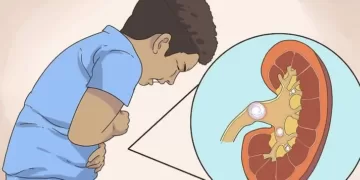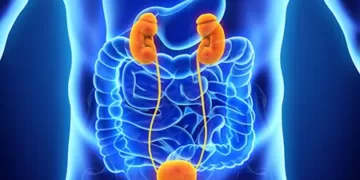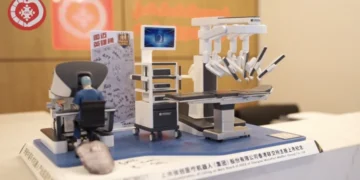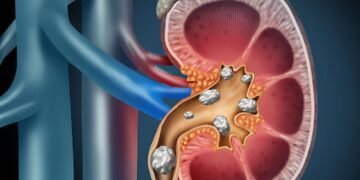Balanitis and balanoposthitis – Doctors call inflammatory disease of the head of the male genital organ balanitis. It is almost always accompanied by inflammation of the inner layer of the foreskin. In this case, the disease is called balanoposthitis.
It is often uncomfortable for men to admit that they have a sore head of the penis. Pain accompanies redness, cracks and discharge are possible. These symptoms (complaints) should not be ignored and do not think that everything can be corrected by increased hygiene. Of course, at this time it is necessary to observe hygiene standards, but this is not enough. Poor hygiene practices can cause discomfort on the head of the penis, as well as other simple and easily treatable causes. However, this discomfort can also be a symptom of serious diseases that require mandatory and timely treatment, such as sexually transmitted or infectious diseases.
Due to the anatomical features, balanitis and balanoposthitis occurs only in men; both an adult and a child-boy can get sick.
During balanitis and balanoposthitis, a man is concerned not only with an unpleasant sensation and pain in the genital area, but also the quality of sexual life can deteriorate sharply. When diagnosing the disease, doctors should exclude syphilis and gonorrhea.
What causes balanoposthitis?
- There are several forms of balanitis and balanoposthitis for various reasons. These conditions can be caused by infections such as fungi, bacteria, and viruses. Sexually transmitted infections (STIs) such as gonorrhea, syphilis, trichomoniasis, and chlamydia can also cause inflammation of the penis head. The symptoms and treatment of balanoposthitis depend on the specific type of infection causing it.
- Candidal balanitis and / or balanoposthitis is the most common form of balanitis. Candidal balanitis and/or balanoposthitis is caused by a fungus, such as Candida, and can develop as a result of sexual contact with a partner who has the fungus infection. The quality of detection of the disease depends on the patient’s immunity and accompanying diseases (for example, diabetes). Candidal balanitis is characterized by a white coating on the head of the penis, itching, and a rash in the form of vesicles. Perhaps the appearance of an ulcer on the head of the penis. Fibrosis and sclerosis may develop;
- The cause of herpes balanitis and/or balanoposthitis is the existence of chronic herpes infection of the genital organ;
- Inadequate hygiene practices, including poor wiping, leaving soap on the penis, or violating hygiene rules, can cause irritant balanitis and/or balanoposthitis. Additionally, tight clothing can also irritate the glans penis.
- Traumatic balanitis and/or balanoposthitis (friction injuries, accidental wounds, erosions, postcoital erosions) develop due to trauma to the glans penis. Bacteria and viruses easily penetrate into injured skin. Cracks on the head of the penis caused by trauma turn red, an inflammatory process and pain develop.
An allergic reaction to hygiene products or other substances can cause allergic balanitis and/or balanoposthitis. - Premalignant, malignant and idiopathic balanitis and/or balanoposthitis.
Some chronic diseases can also cause balanitis and/or balanoposthitis:
- Erythroplasia of Queyra is a precancerous lesion of the glans penis. It occurs in middle-aged and older men. cause unknown;
- Extreme paget’s disease – a tumor disease;
- Zun’s balanitis is considered a type of erythroplasia of Queyrat, although the cause of this condition is unknown. This disease has a benign course. Mostly middle-aged and elderly men get sick.
To provoke balanitis and / or balanoposthitis can:
- Various infections (staphylococci, streptococci and others);
- Chronic diseases (diabetes, anemia, seborrheic diathesis);
- Long or short bridle;
- Phimosis – narrowing of the foreskin.
What are the complaints in balanitis?
For any type of balanitis, the following symptoms are characteristic: redness of the glans penis, itching, burning, discharge with an unpleasant odor. If left untreated in the early stages, inflammation of the head of the penis (balanitis) can progress and become more complicated by spreading to the inner layer of the foreskin (balanoposthitis).
There are three stages in the development of balanitis:
- Redness, swelling of the head and foreskin of the penis, and purulent discharge are characteristic symptoms of simple balanoposthitis. The patient complains of itching and burning.
- The appearance of single isolated or combined erosions on the head of the penis, exfoliation, and copious discharge are characteristic symptoms of erosive balanoposthitis. If left untreated, the disease can progress and lead to regional lymphangitis and acute groin lymphadenitis at later stages.
- Gangrenous balanoposthitis – this stage of the disease, as a rule, proceeds with fever (fever) and deterioration of the general condition. Painful purulent-necrotic ulcers cover the genital organ during gangrenous balanoposthitis, while the glans penis and foreskin become red and swollen. Additionally, copious purulent discharge with a very bad smell may be present.. Ulcers heal very slowly and scars appear in their place.
What can complicate balanitis?
If balanitis is not treated, then it can become complicated and cause:
- Lymphangitis (inflammation of the lymphatic veins of the penis);
- Groin lymphadenitis (inflammation of the lymph nodes of the groin);
- Gangrene of the penis.
How is this pathology established?
Doctors conduct laboratory tests, such as bacteriological smear analysis, to diagnose the disease and determine its cause and form. Based on the results of these tests, doctors will prescribe appropriate treatment.
What is the treatment for balanitis?
Treatment of balanitis and balanoposthitis requires a professional and individual approach in each case.
In the initial, not yet complicated stage, the treatment is not difficult, although it is necessary to strictly follow the doctor’s recommendations and regularly carry out hygiene procedures with soapy water, furacilin solution, hydrogen peroxide or a weak solution of potassium permanganate (potassium permanganate).
Doctors may recommend antimycotic treatment, including topical antibiotics or surgery, for advanced cases of balanitis and balanoposthitis caused by a fungus.
When dealing with chronic balanoposthitis, surgical procedures may be necessary. The medical professionals will conduct the procedure in two stages, while taking the patient’s health condition into account. Initially, they will make an incision in the foreskin. Then, after the acute symptoms of the disease have subsided, they will remove the foreskin.
To prevent a recurrence of inflammation, the patient must follow the doctor’s recommendations, maintain good personal hygiene (especially if they have infectious diseases), and undergo regular check-ups by a doctor after treatment for balanoposthitis.
General Tips:
You can use traditional medicine in addition to the treatment prescribed by your doctor, but you must consult your doctor before trying any folk remedy. So you will avoid all sorts of complications.
With balanitis and balanoposthitis, you can use the following folk remedies:
- wash the head of the penis and foreskin with a decoction of dill root. To prepare a decoction, you need to finely chop 50g. dill root, pour boiling water and cook for 10-15 minutes, leave in a sealed container for 1 hour, then strain and apply for washing;
- Applications and baths of sage decoction reduce itching and inflammation. To prepare a decoction – two tablespoons of dry and finely chopped sage leaves pour 500 ml. boiling water and boil for 10 minutes, then remove from heat and leave for 30-40 minutes in a sealed container, then strain and then you can apply;
- If you have ulcers, it is advisable to apply freshly squeezed aloe juice to the affected area. Aloe juice has an antimicrobial, healing effect;
- With any form of balanitis, you can spread sea buckthorn oil or rosehip oil on the glans penis and foreskin. They help wound healing and they also have an anti-inflammatory effect.












